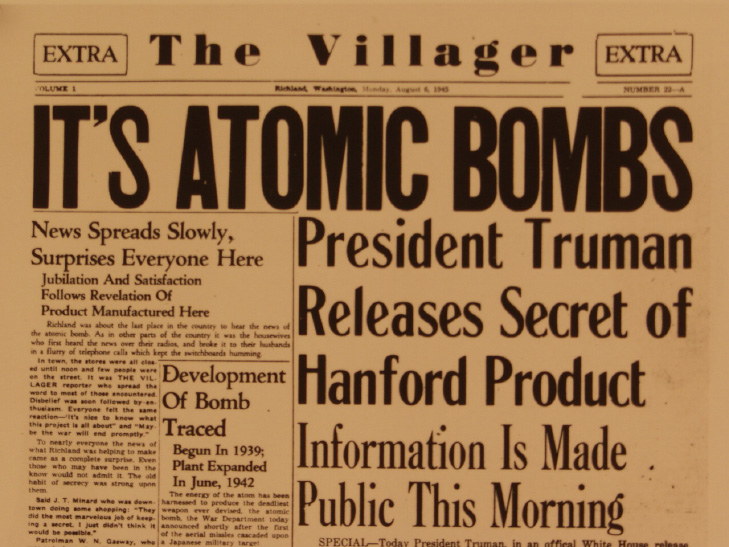WAR DEPARTMENT.
Washington, D.C.
IMMEDIATE RELEASE
August 6, 1945
STATEMENT OF THE SECRETARY OF WAR
The recent use of the atomic bomb over Japan, which was today made known by the President, is the culmination of years of herculean effort on the part of science and industry working in cooperation with the military authorities. This development which was carried forward by the many thousand participants with the utmost energy and the very highest sense of national duty, with the greatest secrecy and the most imperative of time schedules, probably represents the greatest achievement of the combined efforts of science, industry, labor, and the military in all history.
The requirements of security do not permit of any revelation at this time of the exact methods by which the bombs are produced or of the nature of their action. However, in accord with its policy of keeping the people of the nation as completely informed as is consistent with national security, the War Department wishes to make known at this time, at least in broad dimension, the story behind this tremendous weapon which has been developed so effectively to hasten the end of the war.
Before the lights went out over Europe and the advent of war imposed security restrictions, the fundamental scientific knowledge concerning atomic energy from which has been developed the atomic bomb now in use by the United States was widely known in many countries, both Allied and Axis. The war, however, ended the exchange of scientific information on this subject and, with the exception of the United Kingdom and Canada, the status of work in this field in other countries is not fully known, but we are convinced that Japan will not be in a position to use an atomic bomb in this war. While it is known that Germany was working feverishly in an attempt to develop such a weapon, her complete defeat and occupation has now removed that source of danger. Thus it was evident when the war began that the development of atomic energy for war purposes would occur in the near future and it was a question of which nations would control the discovery.
Although there were still numerous unsolved problems concerning the several theoretically possible methods of producing explosive material, nevertheless, in view of the tremendous pressure of time it was decided in December 1942 to proceed with the construction of large scale plants. Two of these are located at the Clinton Engineer Works in Tennessee and a third is located at the Hanford Engineer Works in the State of Washington. The decision to embark on large scale production at such an early stage was, of course, a gamble, but as is so necessary in war a calculated risk was taken and the risk paid off.
A special laboratory dealing with the many technical problems involved in putting the components together into an effective bomb is located in an isolated area in the vicinity of Santa Fe, New Mexico. This laboratory has been planned, organized, and directed by Dr. J. Robert Oppenheimer. The development of the bomb itself has been largely due to his genius and the inspiration and leadership he has given to his associates.
From the outset extraordinary secrecy and security measures have surrounded the project. This was personally ordered by President Roosevelt and his orders have been strictly complied with. The work has been completely compartmentalized so that while many thousands of people have been associated with the program in one way or another no one has been given more information concerning it than was absolutely necessary to his particular job. As a result only a few highly placed persons in Government and science know the entire story. It was inevitable, of course, that public curiosity would be aroused concerning so large a project and that citizens would make inquiries of Members of Congress. In such instances the Members of Congress have been most cooperative and have accepted in good faith the statement of the War Department that military security precluded any disclosure of detailed information.
Every effort is being bent toward assuring that this weapon and the new field of science that stands behind it will be employed wisely in the interests of the security of peace-loving nations and the well-being of the world.





